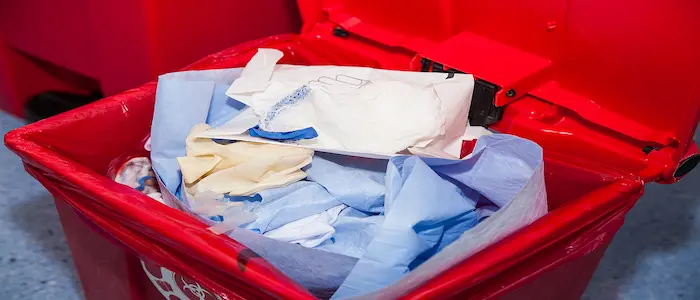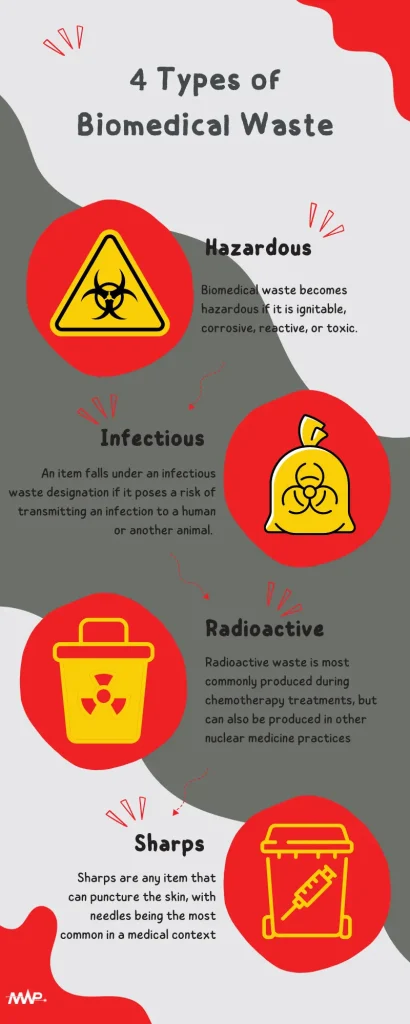Biomedical Waste Disposal Guidelines

Healthcare organizations and practices generate biomedical waste daily, and the bigger the organization, the larger the waste generation. As with any waste generation, it requires disposal. However, with biomedical waste, the process depends on the type of waste and the regulations surrounding its disposal.
Types of Biomedical Waste
Biomedical waste is broken down into 4 categories, each with its disposal requirements and regulations. Those types are hazardous waste, infectious waste, radioactive waste, and sharps. For this blog, general waste is excluded, as you can dispose of it through your standard trash.

Hazardous Waste
Hazardous waste is regulated by the EPA and designated by the Resource Conservation and Recovery Act. Currently, there are over 400 items that fall under this designation.
Biomedical waste becomes hazardous if it is ignitable, corrosive, reactive, or toxic. Some examples include contaminated items with highly communicable diseases, sharps, blood and bodily fluids, and cultures and microbiological specimens.
Infectious Waste
Infectious waste is another biomedical waste category. An item falls under an infectious waste designation if it poses a risk of transmitting an infection to a human or another animal.
Types of waste that fall under this designation often include blood-soaked materials or blood and blood components like plasma and serum, pathological waste, certain human bodily fluids like amniotic or cerebrospinal fluids, used sharps, laboratory waste, and animal waste.
Radioactive Waste
Radioactive waste is most common in chemotherapy treatments. Nuclear medicine practices like mammography or CT scans can also produce radioactive waste. Within radioactive waste, there’s a breakdown between trace waste and bulk waste.
Sharps
Sharps waste makes up the most complicated category of biomedical waste, as what a sharp is used for can change its waste classification. However, regardless of its specific waste classification, you should always place sharps waste in a sharps container.
Sharps used in standard medical procedures generally fall under hazardous waste. However, for chemotherapy treatments, you will likely need to treat them as radioactive sharps and place them in a specific radioactive sharps container. You must treat sharps that come into contact with infectious waste as infectious waste, and so on.
Biomedical Waste Disposal Process
How you handle biomedical waste is dependent on its designation, but for medical practices, it generally falls into placing things in the right bins. Each bin for a waste designation should have a specific color, and for sharps waste, that bin must be puncture-proof.
For biomedical waste that falls under a regulated category outlined above, the waste must be disposed of using a certified medical waste company. Depending on the type of the waste, the waste company will either use autoclaving or incineration to sterilize the waste and then take the sterilized waste to a designated landfill.
Get Biomedical Waste Disposal Services with Medical Waste Pros
Medical Waste Pros partners with a nationwide network of waste disposal providers who are experts in all types of medical waste. Give us a call at (888) 755-6370, or fill out the form on the page. We’ll find your organization a fully compliant and affordable medical waste disposal solution in just minutes.










